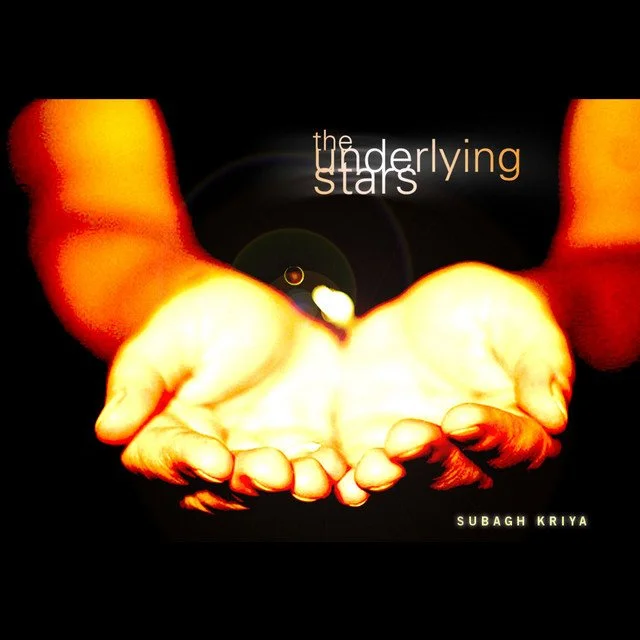
Heroic Practices, Sacred Technologies, Music, Chants
Spotify Playlists for Practice
-

Follow Nicole (jaiya nicole kaur) on Spotify
Please join me on Spotify!
-

Embodying th Heroic Heart of the Dharma (Monday Practice)
Tune In - Adi Mantra & Mangalacharan, The Opening, I Am Loving Awareness, Clandestine, Mere Gurudev, Gopala Lullaby, Prayer Wheel, Faith’s Hymn, Closing Prayers.
-

Embodying the Heroic Heart of the Dharma (Tuesday Practice)
Tune In: Adi Mantra & Mangalacharan, Requiem/We Are Love, Please Pass the Bliss, Yellow, Floating/Extended Mix, A Reminder/Remix, Seven Wave Sat Nam, Closing Prayers.
-

Embodying the Heroic Heart of Dharma (Wednesday Practice)
Tune In: Adi Mantra & Mangalacharan, Ave Maria, My Sweet Lord, Har: Stability, Heavenly Prayer of Light, Prayer Wheel, Seven Wave Sat Nam, Everyday Life
-

Embodying the Heroic Heart of Dharma (Thursday Practice)
Tune In: Adi Mantra & Mangalacharan, I Am, Karma, Om Tare Tuttare, Wahe Guru, Kirtan Kriya
Tune In: Adi Mantra & Mangalacharan
Opening Chants
Adi Mantra:
Ong namo, guru dev namo (chant 3 times)
“I bow to the Creative Wisdom, I bow to the Divine Teacher within.”
Gu (darkness), Ru (light). That which brings us from darkness to light.
The complete Adi mantra is ong namo guru dev namo and is used to tune in to higher consciousness at the beginning of a Kundalini yoga class. Be sure to place the mantra - especially the ong into the nasal cavity. Turn your gaze (drishti) up and into the center of your head, and visualize ringing the tone into the Cave of Bramha (see below: pineal and pituitary gland, home of the 3rd eye).
Mangalacharan Mantra:
Aad Guray Nameh
Jugaad Guray Nameh
Sat Guray Nameh
Siri Guru Dayvay Nameh
I bow to the Wisdom in the beginning.
I bow to the Wisdom through the Ages.
I bow to the True Wisdom.
I bow to the great, unseen Wisdom.
Lokah Samastah Sukhino Bhavantu
Closing Chant
Closing Prayers (Bhagavan Das - Love Songs to the Dark Lord)
Lokah Samastah Sukhino Bhavantu
May all beings be happy and free, and may the thoughts, words and actions of my own life contribute in some way to that happiness and freedom for all.
This is a Sanskrit Mantra to radiate the feeling of love and happiness towards the world.
Area of the Third Eye
Also known as: Cave of Brahma, Eye of Horus, Crystal Palace
As a Planetary Dharma, we are inspired and look towards the Kundalini tradition ritual of opening and closing mantras. In Kundalini we always start a class or a personal practice with the Adi Mantra (Ong Namo Guru Dev Namo), chanting it three to five times. Adi means the first or primal; mantra is the creative projection of the mind through sound.
This mantra is the first creative action. It centers us into the Higher Self and vibrates the pineal and pituitary areas of the brain.
The Adi Mantra connects us to the Golden Chain—the chain of teachers—your teacher, her teacher, his teacher, and so on. The Golden Chain is the channel through which the energy, the wisdom and the protection of the tradition(s) flow to you.
By chanting this mantra and linking to the Golden Chain, the exercises and meditations that you practice are guided by your higher consciousness and all the teachers that have brought this opportunity to you. It makes you very receptive and sensitive to the message of your body, mind, and intuition. It is used as a link when you teach and as preparation for your personal practice. The Golden Chain is the inner spark of kundalini that is passed from person to person; teacher to student; guru to teacher; cosmos and God to Guru.
Chanting the Adi Mantra and connecting to the Golden Chain is a meditation. It is a state of consciousness. It is the link between you as a finite personality and you as a flow of the Infinite Consciousness that guides the kundalini energy.
10 minute practice
Nadi Shodhana: Alternate Nostril Breathing
Relax your left palm comfortably into your lap and bring your right hand just in front of your face.
With your right hand, bring your pointer finger and middle finger to rest between your eyebrows, lightly using them as an anchor. The fingers we’ll be actively using are the thumb and ring finger.
Close your eyes and take a deep breath in and out through your nose.
Close your right nostril with your right thumb. Inhale through the left nostril slowly and steadily.
Close the left nostril with your ring finger so both nostrils are held closed; retain your breath at the top of the inhale for a brief pause.
Open your right nostril and release the breath slowly through the right side; pause briefly at the bottom of the exhale.
Inhale through the right side slowly.
Hold both nostrils closed (with ring finger and thumb).
Open your left nostril and release breath slowly through the left side. Pause briefly at the bottom.
Repeat for the entire song, allowing your mind to follow your inhales and exhales.
Add this Mudra to your meditation practice…
Hakini Mudra
Improves concentration.
Enhances the memory.
Calms the mind and opens it towards clear thinking.
Improves and deepens the breathing, enables good oxygenation to the brain and hence improves brain functions.
Aids in decision making.
Joins opposites.
Helps to resolve inner conflicts.
Helps one to “gather their thoughts”.
Add this to your practice. Center. Self-sooth.
Humming:
The vagus nerve is connected to your vocal cords and the muscles at the back of your throat. Singing, humming, chanting and gargling activates these muscles and stimulate your vagus nerve. This has been shown to increase and release the hormone oxytocin. Oxytocin is a hormone and a neurotransmitter that is involved in childbirth and breast-feeding. It is also associated with empathy, trust, sexual activity, and relationship-building. It is sometimes referred to as the “love hormone,” increase during hugging and orgasm. Humming is so good for us!
Lower heart rate.
Reduce blood pressure.
Slow breathing rate.
Reduce anxiety and depression and creates a positive mood.
Reduce symptoms of insomnia.
Change brain waves.
Help reduce short-term pain.
Add this Mudra to your meditation practice…
Dharmachakra Mudra
This mudra symbolizes one of the most important moments in the life of the Buddha, the occasion when he preached to his companions the first sermon after his Enlightenment in the Deer Park at Sarnath. It thus denotes the setting into motion of the Wheel of the teaching of the Dharma. This Audra symbolizes the Kalachakra which refers to the time cycles and the Twelve Links of Dependent Origination.
The cycle formed with the fingers represents the wheel of dharma. The left hand, which faces the heart, represents the inner world while the right represents the surrounding world. In metaphysical terms, the circle represents the union of method and wisdom. The jewels of Buddhism, which are Buddha, dharma and sangha, are represented by the three stretched fingers of the left hand.
The middle finger of the right hand denotes the listeners of Buddha's teachings. The ring finger represents the realizers of Buddha's teachings. The little finger refers to mahayana, "the great vehicle," which is one of the branches of Buddhism.
Practicing dharmachakra mudra calms the mind and elevates the state of the mind to a higher plane. The mudra also improves focus and helps to maintain positive attitude.
Chanting Sat Nam - Truth is My Name
Seven Waves Sat Nam Meditation
You may start at 11 minutes per day, and build this meditation to 31 minutes per day, in turn, the mind will be cleansed just as the ocean waves wash the sandy beach.
This is a bij (seed) mantra meditation. Bij mantras such as Sat Naam are sounds which can rearrange the habit patterns. We all have habit patterns; we could not function without them. But sometimes the patterns we have created are not wanted.
When you grow change, you want the patterns to change as well. By vibrating the sound current Sat Naam in this manner, you activate the energy of the mind that erases and establishes habits. It will open the mind to a new perspective - a new operating system or vantage point.
After chanting this mantra, you will feel calm, relaxed, and mellow.
Posture: Sit in Easy Pose, with a the chin slightly tucked.
Mudra: Dharmachakra Mudra
Breath and Mantra: Inhale deeply, concentrating on the breath. With the exhale, chant the mantra in the law of seven (the law of the tides). Vibrate Sat in six waves, and let Naam be the seventh.
Visualization: On each wave, thread the sound through the chakras beginning at the base of the spine at the First Chakra.
On Naam, let the energy and sound radiate from the Seventh Chakra at the top of the head through the aura, unto Infinity.
As the sound penetrates each chakra, gently pull the physical area it corresponds to: The first center is the rectum; the second is the sex organs; the third is the Navel Point; the fourth is the heart; the fifth is the throat; the sixth is the Brow Point; and the seventh is the top of the head.
Eyes: Focus at the Brow Point.
Time: Continue for 11 – 31 minutes.
Add this Mudra to your meditation practice…
Ksepana Mudra
When breath of fire pranayama and Ksepana mudra are practiced together the flow of prana, the life force energy in the body is better able to circulate and healthy oxygenation of the entire body is possible.
Ksepana mudra removes negative energy that relates to thoughts and emotions from the mind, replacing them with positive energy which improves your well being and vitality.
Ksepana Mudra is said to be a great instrument when it comes to developing intuition and heightened sensory abilities.
It is also useful when it comes to detoxifying the body from metabolic waste.
The ksepana mudra is said to be a great resource when it comes to regulating heartbeat.








